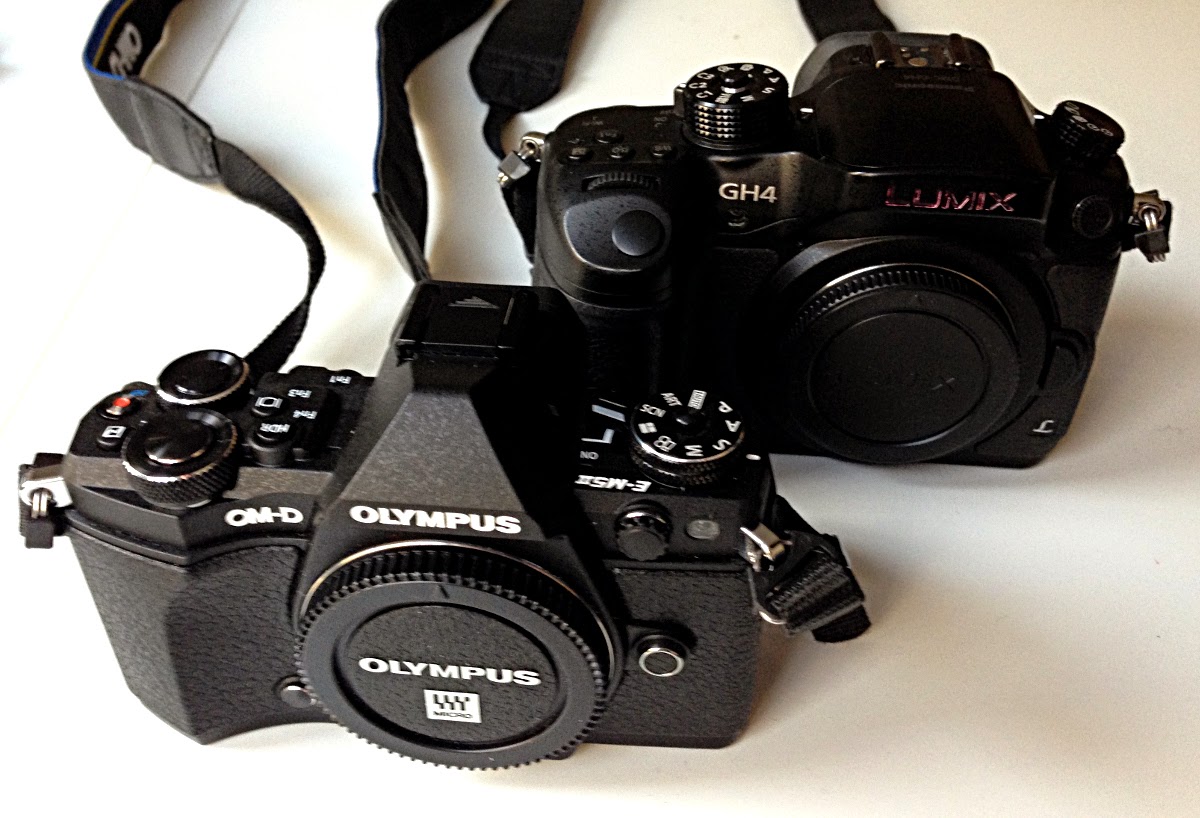The Olympus E-M5 Mark II introduces a number of firsts in Micro Four Thirds: In-body image stabilization usable for video recording (tested here), high resolution mode (tested here), and the first Olympus camera with an electronic shutter mode. In this article, I will compare the shutter modes of the Olympus E-M5 Mark II.
Electronic shutter mode was introduced with the Lumix G5 camera in 2012. The same Lumix G6 and Lumix GH3 shared the same electronic shutter implementation, which has a significant drawback: The sensor is read during a rather slow period of 1/10s second, which can lead to significant rolling shutter effects.
The Lumix GH4 (my review) improves upon this with a 1/30s sensor output, on the other hand, it only uses 10 bits depth in electronic shutter mode, which can give you less effective dynamic range.
Introduction
This blog is a user's perspective on the Micro Four Thirds camera system. Read more ...
Lens Buyer's Guide. Panasonic GH4 review.
My lens reviews: Olympus 9mm f/8 fisheye, Lumix G 12-32mm f/3.5-5.6, Leica 25mm f/1.4, Lumix X 12-35mm f/2.8, Lumix X 35-100mm f/2.8, Sigma 30mm f/2.8, Sigma 19mm f/2.8, Lumix X PZ 14-42mm f/3.5-5.6, Lumix X PZ 45-175mm f/4-5.6, Olympus M.Zuiko 45mm f/1.8, Panasonic Lumix G 100-300mm f/4-5.6, Panasonic Leica Lumix DG Macro-Elmarit 45mm f/2.8 1:1 Macro, Panasonic Lumix G 45-200mm f/4-5.6, Panasonic Lumix G 20mm f/1.7 pancake, Panasonic Lumix G 14mm f/2.5 pancake, Panasonic Lumix G HD 14-140mm f/4-5.8, Panasonic Lumix G HD 14-140mm f/3.5-5.6, Panasonic Lumix G 8mm f/3.5 fisheye, Lumix G 7-14mm f/4, Samyang 7.5mm f/3.5 fisheye, Tokina 300mm f/6.3 mirror reflex tele, Lensbaby 5.8mm f/3.5 circular fisheye lens
The blog contains affiliate links. As an Amazon Associate I earn from qualifying purchases.
Lens Buyer's Guide. Panasonic GH4 review.
My lens reviews: Olympus 9mm f/8 fisheye, Lumix G 12-32mm f/3.5-5.6, Leica 25mm f/1.4, Lumix X 12-35mm f/2.8, Lumix X 35-100mm f/2.8, Sigma 30mm f/2.8, Sigma 19mm f/2.8, Lumix X PZ 14-42mm f/3.5-5.6, Lumix X PZ 45-175mm f/4-5.6, Olympus M.Zuiko 45mm f/1.8, Panasonic Lumix G 100-300mm f/4-5.6, Panasonic Leica Lumix DG Macro-Elmarit 45mm f/2.8 1:1 Macro, Panasonic Lumix G 45-200mm f/4-5.6, Panasonic Lumix G 20mm f/1.7 pancake, Panasonic Lumix G 14mm f/2.5 pancake, Panasonic Lumix G HD 14-140mm f/4-5.8, Panasonic Lumix G HD 14-140mm f/3.5-5.6, Panasonic Lumix G 8mm f/3.5 fisheye, Lumix G 7-14mm f/4, Samyang 7.5mm f/3.5 fisheye, Tokina 300mm f/6.3 mirror reflex tele, Lensbaby 5.8mm f/3.5 circular fisheye lens
The blog contains affiliate links. As an Amazon Associate I earn from qualifying purchases.
Monday 6 April 2015
Wednesday 1 April 2015
Olympus OM-D E-M5 Mark II High Resolution Mode
The headline new feature of the Olympus OM-D E-M5 Mark II is the high resolution mode. The camera is not the first to take multiple pictures while shifting the sensor, to achieve a higher image quality. The Hasselblad H5D 50c takes six picture for a total of 200MP resolution.
However, the E-M5 Mark II takes this feature to the affordable enthusiast market. By taking a total of eight pictures using the electronic shutter, while shifting the sensor, it achieves a whopping 64MP resolution (available using RAW only, the JPEG output tops out at 40MP).
But is the resolution really twice that of the ordinary 16MP output? That is what I am looking into here.
To test it, I have taken the same picture at 12mm using the high resolution feature, and at 24mm using the normal exposure. The pictures were taken with the Lumix X 12-35mm f/2.8 (my review), which is the best M4/3 lens I have used.
However, the E-M5 Mark II takes this feature to the affordable enthusiast market. By taking a total of eight pictures using the electronic shutter, while shifting the sensor, it achieves a whopping 64MP resolution (available using RAW only, the JPEG output tops out at 40MP).
But is the resolution really twice that of the ordinary 16MP output? That is what I am looking into here.
To test it, I have taken the same picture at 12mm using the high resolution feature, and at 24mm using the normal exposure. The pictures were taken with the Lumix X 12-35mm f/2.8 (my review), which is the best M4/3 lens I have used.
Subscribe to:
Posts (Atom)
